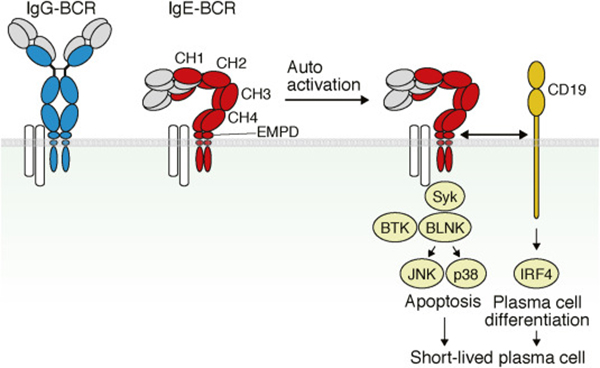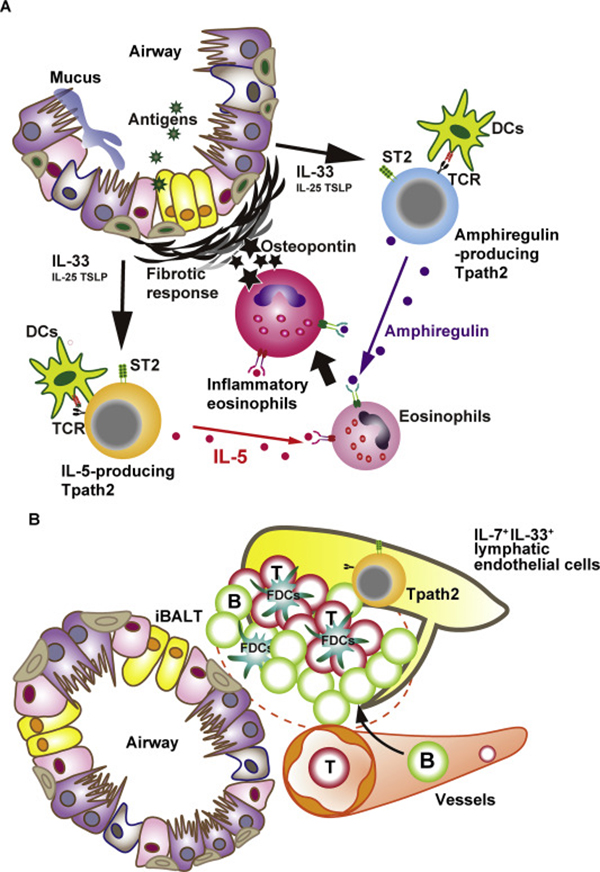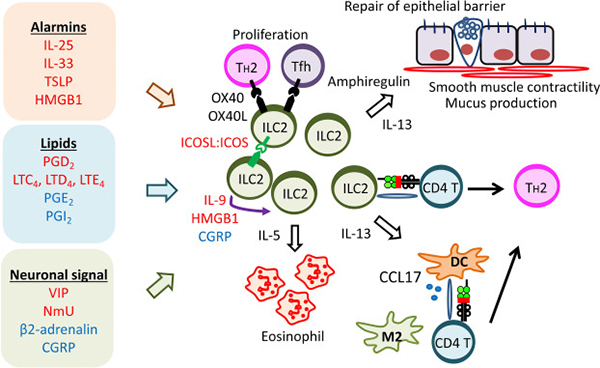Volume 70, Issue 2 (April 2021)
Review Series: Immunological Memory and Allergic Diseases
Haniuda and Kitamura focused on the differences in the characteristics of IgE production and IgE's affinity and specificity between physiological conditions—such as immune responses to parasite infections, bee sting venom, etc.—and allergic diseases. In physiological conditions, IgE production is transient, and the serum IgE level does not persist for a long time, partly because of the short half–life of the IgE. In addition, the IgE produced in this setting is antigen–nonspecific or has extremely low affinity. On the other hand, in allergic diseases the serum IgE persists even in the absence of re-exposure to the eliciting allergen, and the IgE is antigen–specific and functional. Based on these facts, they explain the underlying mechanisms of IgE production in allergic diseases and point out issues that need further investigation.
T cells are another key cell type involved in immunological memory. Recent progress in this area includes discovery of heterogeneity of memory T cells. New technologies such as lineage tracing and single–cell RNA–sequencing enable determination of the localization, dynamics and characteristics of specific cell types at the single–cell level. As a result, it is becoming clear that memory T cells are heterogeneous in terms of localization and function. Hirahara, Aoki and Nakayama summarize the current knowledge regarding a novel memory T–cell subset, i.e., pathogenic Th2 cells (Tpath2), which is more highly functional. They also discuss the heterogeneity of Tpath2, including IL-5–producing Tpath2 and amphiregulin–producing Tpath2, and explain their functional differences.
Immunological memory was considered to be an exclusive hallmark of the adaptive immune system. However, a growing body of literature shows that the innate immune system is also able to enhance its response to earlier insults, which was proven by protection against re-infection of invertebrates lacking an adaptive immune system. This memory–like property of the innate immune system is now referred to as “trained immunity”. Ebihara et al. summarize the current knowledge regarding trained immunity of group 2 innate lymphoid cells (ILC2s) and its epigenetic regulation. They also propose a new facet of trained immunity of ILC2s, that is, that they become immune suppressive or less functional, similar to the concept of T–cell exhaustion.





